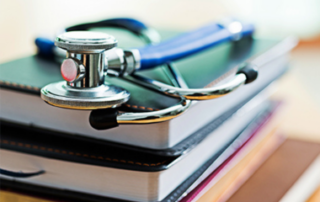Newsroom
The American Academy of Sleep Medicine helps journalists who are seeking a sleep expert or looking for information about sleep and sleep disorders, the medical specialty of sleep medicine, or sleep and circadian science. Please contact us to request information or to coordinate an interview with an AASM spokesperson.
media@aasm.org
630-737-9700
Media representatives must register with the APSS public relations office before receiving press registration for the SLEEP annual meeting of the Associated Professional Sleep Societies (APSS). If you’re interested in covering the SLEEP meeting, please email media@aasm.org. More information about eligibility, registration, and access, is available in the SLEEP annual meeting press room.
American Academy of Sleep Medicine
- Established in 1975
- Membership of more than 9,500 physicians, scientists, and other health care professionals
- More than 2,300 AASM-accredited sleep centers across the U.S.
- AASM fact sheet
Sleep Medicine
- Sleep medicine is a medical specialty with more than 100 fellowship training programs in the U.S.
- The annual board-certification exam in sleep medicine is offered by six member boards of the American Board of Medical Specialties: American Board of Internal Medicine, American Board of Psychiatry and Neurology, American Board of Pediatrics, American Board of Otolaryngology, American Board of Family Medicine, American Board of Anesthesiology.
- There are 5,900 board-certified sleep medicine physicians in the U.S. (ABMS, 2025)
Adult Sleep Duration
- The American Academy of Sleep Medicine recommends that adults should sleep 7 or more hours per night on a regular basis to promote optimal health. (AASM, 2015)
- About 30% of U.S. adults report getting an average of less than 7 hours of sleep per night. (CDC, 2022)
- Healthy sleep duration varies among states. The percentage of adults who reported sleeping at least 7 hours was lowest at 56.1% in Hawaii and highest at 71.6% in South Dakota. (CDC, 2016)
- The age-adjusted mean sleep duration of U.S. adults was 7.18 hours in a 24-hour period in 2012. (CDC, 2015)
- In 2012 about 70.1 million U.S. adults reported sleeping 6 hours or less. (CDC, 2015)
- Since 1985 the percentage of U.S. adults sleeping 6 hours or less has increased by 31%. (CDC, 2015)
- Poll data show that U.S. adults averaged 6.8 hours of sleep at night in 2013, down more than an hour from 1942. (Gallup, 2013)
- The percentage of U.S. adults who report that they usually sleep 7 or more hours at night decreased from 84% in 1942 to 59% in 2013. (Gallup, 2013)
Teen Sleep Duration
- The American Academy of Sleep Medicine recommends that teens should sleep 8 to 10 hours on a regular basis to promote optimal health. (AASM, 2016)
- About 77% of high school students report sleeping less than 8 hours on an average school night. (CDC, 2021)
Sleep Disorders
- 50 to 70 million Americans have a chronic sleep-wake disorder (The National Academies, 2006)
- There are more than 50 sleep-wake disorders classified in the International Classification of Sleep Disorders – Third Edition, Text Revision (AASM, 2023)
Insomnia
- About 30 to 35% of the population has transient insomnia symptoms. (AASM: ICSD-3, 2014)
- The one-year prevalence of short-term insomnia disorder (less than 3 months) among adults appears to be in the range of 15% to 20%. (AASM: ICSD-3, 2014)
- The full clinical syndrome of chronic insomnia disorder (at least 3 months) occurs in about 10% of the population. (AASM: ICSD-3, 2014)
- Health care spending on insomnia was $5.1 billion in 2013. (JAMA, 2016)
- In 2020, 6.3% of adults took any sleep medication to help them fall asleep or stay asleep every day in the last 30 days, 2.1% took medication most days, 10.0% took medication some days, and 81.6% never took medication. (CDC, 2023)
- About 4% of U.S. adults aged 20 and over used prescription sleep aids in the past month. (CDC, 2013)
- Chronic insomnia is associated with an average loss of 45-54 days in workplace productivity, resulting in estimated annual losses in national gross-domestic product ranging from 0.64% to 1.31%, or approximately $1.8 to $207.5 billion. (RAND, 2023)
- The total costs of insomnia in aggregate exceed $100 billion USD per year, with the majority being spent on indirect costs such as poorer workplace performance, increased health care utilization, and increased accident risk. (Sleep Medicine Reviews, 2016)
- Annual U.S. losses in work performance associated with insomnia equal to 252.7 million days and $63.2 billion after controlling for comorbidity. (Sleep, 2011)
Obstructive Sleep Apnea
- It is estimated that 936 million adults worldwide have mild to severe obstructive sleep apnea, and 425 million adults have moderate to severe obstructive sleep apnea globally. (Lancet Respiratory Medicine, 2019)
- It is estimated that 54 million adults in the U.S. have mild to severe obstructive sleep apnea, and 24 million adults have moderate to severe obstructive sleep apnea nationwide. (Lancet Respiratory Medicine, 2019)
- It is estimated that obstructive sleep apnea will affect 76.6 million adults in the U.S. in 2050. (Lancet Respiratory Medicine, 2025)
- Undiagnosed OSA costs the U.S. approximately $149.6 billion annually. (AASM, 2016)
- Obstructive sleep apnea patients who were adherent with positive airway pressure (PAP) therapy had a 25.7% reduction in health care utilization composite score. (Sleep Medicine, 2017)
- Treatment of obstructive sleep apnea with PAP therapy is estimated to reduce the 10-year risk of motor vehicle crashes by 52%, the 10-year expected number of heart attacks by 49%, and the 10-year risk of stroke by 31%. (Sleep, 2011)
Drowsy Driving
- Each year in the U.S. drowsy driving causes an average of 328,000 motor vehicle accidents, including 6,400 fatal crashes. (AAA Foundation, 2014)
- Nearly 1 in 3 drivers (32 percent) say they have driven when they were so tired that they had a hard time keeping their eyes open in the past 30 days. (AAA Foundation, 2016)
- Drivers who usually sleep for less than 5 hours daily had 5.4 times the crash rate of drivers who reported that they usually slept for 7 hours or more. (AAA Foundation, 2016)
- AASM position statements and health advisories: https://aasm.org/advocacy/position-statements/
- Public website: http://sleepeducation.org/
- Directory of AASM-accredited member sleep centers: http://sleepeducation.org/find-a-facility
- Infographics: http://sleepeducation.org/healthysleep/infographics
Sleep Prioritization Survey
Each year since 2019, the AASM has commissioned an online survey by an independent market research agency. The survey of adults in the U.S. asks about a variety of sleep-related topics.
About the Survey
The American Academy of Sleep Medicine commissioned an online survey of 2,006 adults in the U.S. The overall margin of error fell within +/- 2 percentage points with a confidence interval of 95 percent. Fieldwork took place between June 5-13, 2025. Atomik Research is an independent market research agency.
- Adjusting Your Sleep Routine
- Areas of Life Affected by Sleepiness
- Areas of Life Affected Negatively by Seasonal Time Change
- Daily Activities Affected by Sleepiness
- Drowsy Driving
- Factors for Elected Officials
- Improving Alertness
- Losing Sleep to Worries
- Negative Impacts of Children Not Getting Enough Sleep
- Parents Giving a Child Melatonin
- Regular Bedtime Routine for School-Aged Children
- Social Media Sleep Trends
About the Survey
The American Academy of Sleep Medicine commissioned an online survey of 2,006 adults in the U.S. The overall margin of error fell within +/- 2 percentage points with a confidence interval of 95 percent. Fieldwork took place between May 16-24, 2024. Atomik Research is an independent market research agency.
- Adjusting Your Sleep Routine
- After Election Night Sleepiness
- AI and Emerging Technology Worries
- Bedtime
- Children and Teens Not Getting Enough Sleep
- Children and Teen Regular Bedtime
- Children and Teen Sleep Disruptors
- Chronic Insomnia
- Disrupted Sleep: Anxiety
- Disrupted Sleep: Depression
- Disrupted Sleep: Stress
- Daylight Saving Time – Legislation
- Difficult to Remain Alert
- Election Worries
- Financial Worries
- Global Conflict Worries
- How Exercise Affects Sleep
- Impacts of Sleepiness on Daily Activities
- Improve Alertness
- Improve Alertness – Exercise
- Job Security Worries
- Losing Sleep Over Sleep
- Losing Sleep Over Work Worries
- Melatonin and Kids
- Negative Impacts of Daytime Sleepiness
- Olympic Tiredness
- Parents Co-Sleeping with Children
- Set Bedtime
- Sleep Disorder Diagnosis
- Sleep Duration
- Social Media Sleep Trends
- Super Sleep Deprived
- Tired for the Holidays – Back to work
- Tired for the Holidays – During the holiday season
- Tired for the Holidays – New Year’s Day
- World Series Weariness
About the Survey
The American Academy of Sleep Medicine commissioned an online survey of 2,005 adults in the U.S. The overall margin of error fell within +/- 2 percentage points with a confidence interval of 95 percent. Fieldwork took place between March 24-29, 2023. Atomik Research is an independent market research agency.
- Americans using sleep trackers who changed behavior
- Americans using sleep trackers who find it was helpful
- Americans using sleep trackers
- Bedtime Routines
- Bedtime Routines
- Children and Teen Sleep Disruptors
- Disrupted Sleep due to Trouble Falling Asleep
- Disrupted Sleep due to Trouble Staying Asleep
- DST — Dark Mornings
- DST — Legislation
- Eliminating seasonal time changes
- Losing Sleep to Environmental Worries
- Lost Sleep Due to Marijuana Use
- Light and Noise Disrupting Sleep
- Marijuana Use to Help Fall or Stay Asleep
- Melatonin Use
- Parents Giving Melatonin to Children
- Sleep Aid Use
- Sleep Divorce
- Sleep Trends
- Sleeping with a Pet
- Social Media Trends
- Waking up Feeling Well-Rested
About the Survey
The American Academy of Sleep Medicine commissioned an online survey of 2,010 adults in the U.S. The overall margin of error fell within +/- 2 percentage points with a confidence interval of 95 percent. Fieldwork took place between Feb. 17-24, 2022. Atomik Research is an independent market research agency.
- COVID-somnia Survey Results
- Drinking Alcohol Past Bedtime
- Feeling Well-Rested
- Insomnia Impact on Daily Life
- Losing Sleep Due to Health Concerns
- Losing Sleep Due to Politics
- Losing Sleep to COVID-19 Worries
- Losing Sleep to Environmental Worries
- Losing Sleep to Finance Worries
- Losing Sleep to Work Worries
- Playing Video Games Past Bedtime
- Productivity Impacted by Sleepiness
- Sleep Aid Use
- Sleeping with a Pet
- Social Media Impact on Sleep
- Sunday Scaries
About the Survey
The American Academy of Sleep Medicine (AASM) commissioned an online survey of 2,006 adults in the U.S. The margin of error fell within +/- 2 percentage points with a confidence interval of 95%. The fieldwork took place from March 11-15, 2021. Atomik Research is an independent market research agency.
- Addressing Sleep Disorders Results
- Awareness of OSA Results
- Bed Partners Who Snore Results
- COVID-somnia Survey Results
- Discussing Sleep Problems Results
- Factors Preventing Sleep Center Visits Results
- Familiarity with Sleep Centers Results
- OSA Symptoms Results
- Seriousness of OSA Results
- Sleep Aid Use Survey Results
About the Survey
The July 2020 Sleep Prioritization Survey involved 2,007 adult participants. The sample consisted of 1,005 parents with children between the ages of five and 18 years old. The margin of error is +/- 2 percentage points with a confidence interval of 95 percent. Atomik Research, an independent market research agency, conducted the survey.
- Adult Sleep Duration
- After Election Night Results
- Amount of Sleep on School Nights Results
- Bedtime School Night Results
- COVID-19 Remote Learning Student Sleep Results
- COVID-19 and the Impact on Sleep Results
- Drinking Alcohol Past Bedtime
- Elimination of Seasonal Time Changes Results
- Sleep’s Impact on Student Health Results
- Student Activities Results
About the Survey
The September 2019 AASM Sleep Prioritization Survey involved 2,003 adult participants in the U.S. The margin of error is +/- 2 percentage points with a confidence interval of 95 percent. Atomik Research, an independent market research agency, conducted the survey.
- Bedtime Reading Results
- Bedtime Results
- Binge-Watching Results
- Black Friday Results
- Daily Priorities Results
- Drowsy Driving Results
- Fall Daylight Saving Time Results
- Missing Bedtime Results
- New Year’s Day Results
- Set Bedtime Results
- Sleep While Traveling Results
- Summer Sleep Results
- Sporting Event Results
- Spring Daylight Saving Time Results
- Super Bowl Results
- Tired After Traveling Results
- Video Game Results
- Winter Sleep Results
- World Series Results
Press Releases
New Year’s fitness resolutions start with healthy sleep
2025-12-17T12:12:06-06:00December 15th, 2025|
As the new year approaches, many Americans are setting fresh intentions to eat better and move more — and [...]
Scrolling for sleep: The social media trends impacting Americans’ sleep habits
2025-12-03T11:14:53-06:00December 2nd, 2025|
Social media trends have become increasingly influential – even changing bedtime routines and sleep habits for many Americans. According [...]
Insomnia combined with sleep apnea is associated with worse memory in older women
2025-12-01T15:22:27-06:00December 1st, 2025|
DARIEN, IL — New research among older adults with sleep apnea reveals that verbal memory performance is significantly worse [...]



